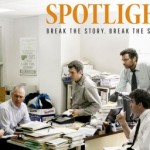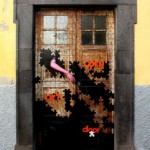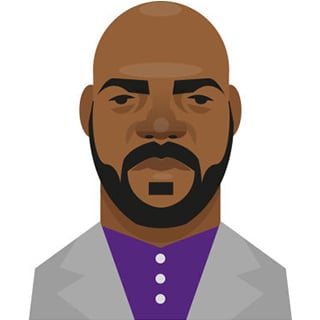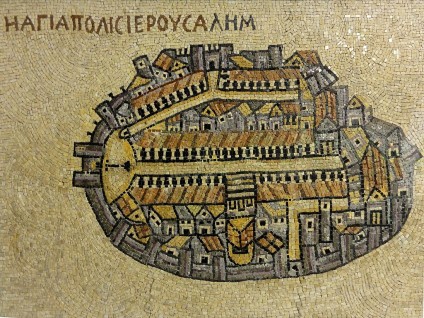 When Jesus of Nazareth came riding into Jerusalem on his mule, a small group of radicals, illiterates, and ne’er-do-wells hailed him as the Messiah, the Christ. Everybody else suggested that you had to draw the line somewhere and advised a public and unpleasant execution so nobody would fail to get the point. – Frederick Buechner, in Wishful Thinking.
When Jesus of Nazareth came riding into Jerusalem on his mule, a small group of radicals, illiterates, and ne’er-do-wells hailed him as the Messiah, the Christ. Everybody else suggested that you had to draw the line somewhere and advised a public and unpleasant execution so nobody would fail to get the point. – Frederick Buechner, in Wishful Thinking.
When he told his friends he was going to go to Jerusalem, they knew it was going to be horrid. Peter begged him not to go. His reply was fierce. He called Peter Satan, and told them all they would have to take risks like this , be ready to lose their lives, if they were going to follow him.
 Whether you believe Jesus always knew it would come to crucifixion, or whether, like Jesuit theologian Jon Sobrino, you believe this was a hinge moment, when his awareness of his mission changed and he knew he was going to have to walk into the hell-hole Jerusalem had become (Christology at the Crossroads), or whether, like me, you believe he kept his heart fixed on the slim possibility that somehow he might survive, still, you know what it means when he sets his face toward Jerusalem.
Whether you believe Jesus always knew it would come to crucifixion, or whether, like Jesuit theologian Jon Sobrino, you believe this was a hinge moment, when his awareness of his mission changed and he knew he was going to have to walk into the hell-hole Jerusalem had become (Christology at the Crossroads), or whether, like me, you believe he kept his heart fixed on the slim possibility that somehow he might survive, still, you know what it means when he sets his face toward Jerusalem.
Setting your face toward Jerusalem has become a trope. It isn’t just facing hard times. There has to be something huge at risk: your life; your honor and reputation; the possibility of disastrous failure, and the responsibility for it resting on you.
All of us face hard times, defeats, losses. But the order of magnitude is nowhere near this kind of act.
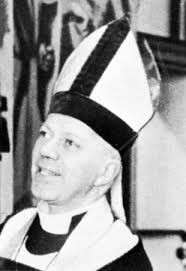 Still, there are some I can think of who have truly set their faces towards Jerusalem:
Still, there are some I can think of who have truly set their faces towards Jerusalem:
George Bell, Dean of Canterbury Cathedral throughout WW2, personal friend of Dietrich Bonhoeffer and signer of the Barmen Declaration that founded the Confessing Church, went before Parliament after the fire-bombing of Dresden to denounce this as a heinous act. He made his views on the immorality of area bombing known publicly on several occasions. These actions cost him dearly, as he became unsuitable in the eyes of Parliament to become Archibishop of Canterbury.
Abraham Lincoln, whose support for Emancipation took all his considerable skill to enact and cost him his life. It may be the single greatest action of any President.
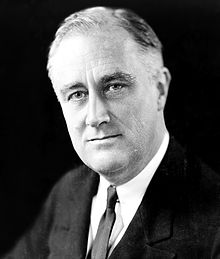 Franklin Roosevelt, whose support for US involvement in WW2 made him a wartime President, the strain and exhaustion of which may well have shortened his life. He died while Commander in Chief during an ongoing war. He was a savior for the nation, bringing it through the Depression and the War, reimagining the economy and introducing such programs as Social Security.
Franklin Roosevelt, whose support for US involvement in WW2 made him a wartime President, the strain and exhaustion of which may well have shortened his life. He died while Commander in Chief during an ongoing war. He was a savior for the nation, bringing it through the Depression and the War, reimagining the economy and introducing such programs as Social Security.
Eleanor Roosevelt, who bore her husband six children and nursed him through polio, only to discover he had been carrying on an affair with another woman. Still, she agreed to be his First Lady, creating her own space and life in that role, taking on the education of the American public on a number of issues, standing for civil rights, women’s rights, and human rights. For countless American women of her era, she has been a beacon and a role model.
only to discover he had been carrying on an affair with another woman. Still, she agreed to be his First Lady, creating her own space and life in that role, taking on the education of the American public on a number of issues, standing for civil rights, women’s rights, and human rights. For countless American women of her era, she has been a beacon and a role model.
 Mother Teresa, who left the convent life of school teaching in India to move into the slums alone and collect up the dying from the public streets, beginning a new order of nuns and a new form of service. Nominated for Sainthood, she is also now a deity in the Hindu temples around Calcutta.
Mother Teresa, who left the convent life of school teaching in India to move into the slums alone and collect up the dying from the public streets, beginning a new order of nuns and a new form of service. Nominated for Sainthood, she is also now a deity in the Hindu temples around Calcutta.
James Foley, a journalist who grew up here in NH, who worked as a war correspondent, and who returned to Syria, knowing the dangers yet believing in the importance of telling this story to the world. Captured and imprisoned, he was beheaded a week ago. His friends remember him as a consummate journalist and a profoundly caring human being. Here in NH, our weeping is not yet over for this good and honorable man.
Faith, according to the Letter to the Hebrews, 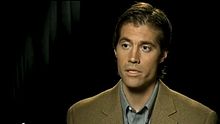 is the assurance of things hoped for, the evidence of things not seen. It is in the strength of this, which is the utter strength of Jesus, that he proceeds toward Jerusalem.
is the assurance of things hoped for, the evidence of things not seen. It is in the strength of this, which is the utter strength of Jesus, that he proceeds toward Jerusalem.
Frederick Buechner writes, Faith is better understood as a verb than as a noun, as a process than as a possession. It is on-again-off-again rather than once-and-for-all. Faith is not about being sure where you are going, but going anyway. A journey without maps. Tillich said that doubt isn’t the opposite of faith; it is an element of faith.
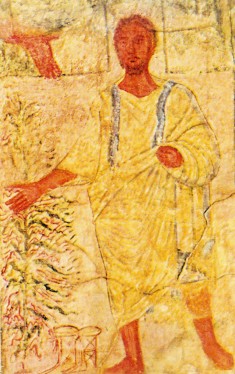 Paired with this reading from Matthew is the story of Moses at the burning bush, able to hear the will of God that directs him into the living hell of Pharoah’s court, a place from which he has fled. In terror, Moses pours out his fear of failure, and God assures him he will not be alone.
Paired with this reading from Matthew is the story of Moses at the burning bush, able to hear the will of God that directs him into the living hell of Pharoah’s court, a place from which he has fled. In terror, Moses pours out his fear of failure, and God assures him he will not be alone.
And so it is for Jesus. They do go with him, his friends, and even though at the very end many flee in fear, a few are with him till the end. He is not alone. He himself said two or three were enough for him to be alive. Even in Jerusalem.
And this is where I find myself in the story. I know I am too chicken to choose danger on my own, I am a lot more like Peter, wishing we could just stay home where life is safer. But if you have my heart, you have my feet, walking along with you, as Peter did. And Jesus has managed to tug my heartstrings to approach a lot of suffering. Even, now and then, my own. I remind myself that The Way isn’t supposed to be easy, that The Way can be dreadful, and worse than that, at times. And that even one friend makes two of us, and we are a place where Christ is. And whatever happens, that is enough.
_____________________________________________________
Illustrations:
1. Reproduction of the 6th cent. A.D. Madaba map mosaic showing the cityscape of Jerusalem (this is a detail of the map.) Image from Wikipedia page for Old Jerusalem.
2. In the Garden. He Qi. Nanjing, China 2000. Vanderbilt Divinity School Library, Art in the christian Tradition.
3. George Bell, Dean of Canterbury Cathedral, 1929 – 1958. Image: Brittanica.com.
4. Franklin Roosevelt. Image from Wikipedia page.
5. Eleanor Roosevelt. Google bio photo.
6. Mother Teresa. Image from her Wikipedia page.
6. James Foley. Image from his Wikipedia page.
7. Moses at the Burning Bush. Dura-Europos Synagogue, Syria. circa 250. Vanderbilt Divinity School Library, Art in the Christian Tradition.


